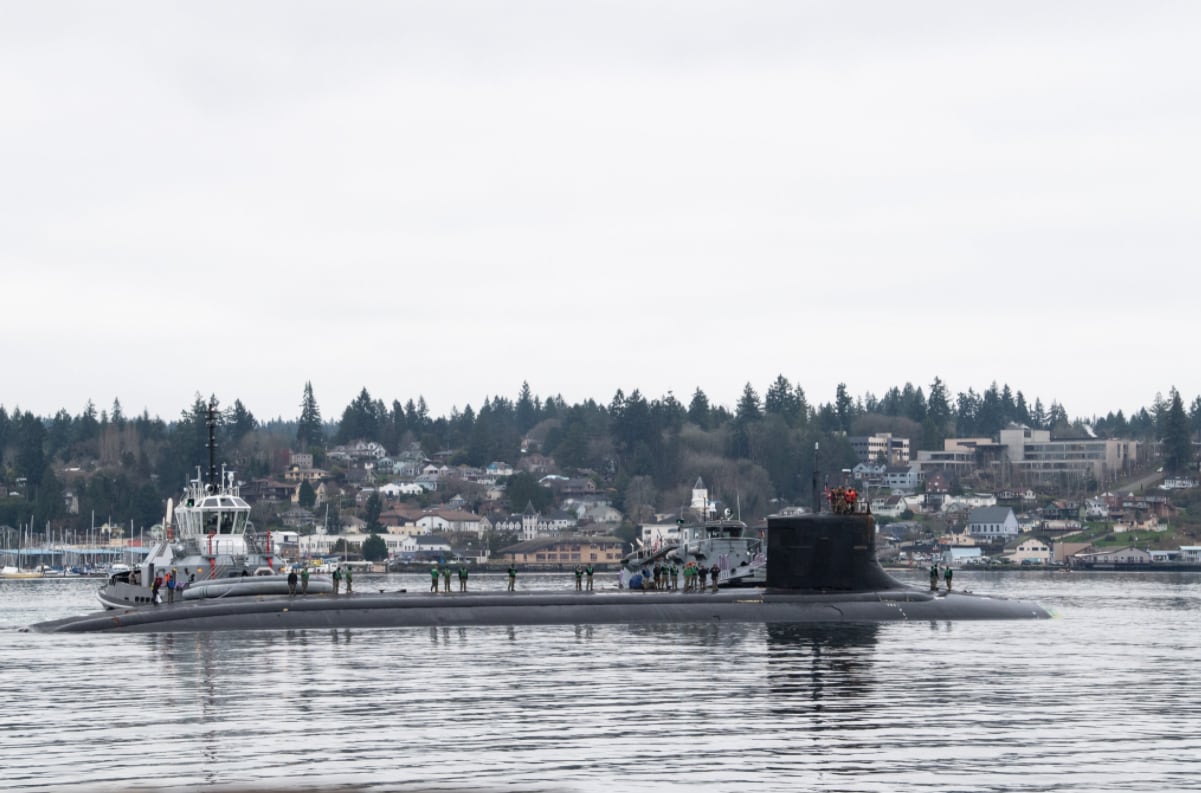The stealthy and pricey fast-attack submarine Connecticut sustained damage to its forward main ballast tanks and sonar sphere when it grounded in the Indo-Pacific last fall, and the sonar dome needs to be replaced, Submarine Force Pacific officials said Wednesday.
The sub ran into an undersea mountain in the South China Sea Oct. 2.
But neither the pressure hull nor the nuclear propulsion plant suffered damage in the mishap, according to SUBPAC spokeswoman Cmdr. Cynthia Fields.
“Based on the damage, there was no risk to the submarine’s buoyancy or stability,” Fields told Navy Times.
For months, sub veterans and online Navy watchers have speculated about what sort of damage the boat suffered based on public photos of its transit back to the states.
But Wednesday’s disclosure to Navy Times is the first official tally of what that undersea mishap did to the Seawolf-class sub, one of only three in the sea service.
The sonar sphere sits within the sub’s fiberglass-like sonar dome at the bow of the ship, while the forward main ballast tanks span from the dome to the rest of the ship and help the boat submerge and surface.
An industry source, who was not authorized to speak to Navy Times on the record, said replacing the sonar dome may be the toughest part of the repairs because the three-sub Seawolf class is unlikely to have replacement parts on hand.
When the submarine San Francisco had a similar underwater incident in 2005, the Navy pulled a sonar dome from a recently decommissioned Los Angeles-class boat to replace it.
That won’t be possible for Connecticut, the source said, meaning the Navy will have to work with industry to engineer a new dome and find a supplier to build it — amid the other work being done to build new Virginia- and Columbia-class boats.
The boat entered drydock at Puget Sound Naval Shipyard Feb. 8, and is undergoing “a thorough assessment,” Fields told Navy Times.
But how long it will take to get Connecticut back into the fight, and how much it will cost, remain unclear.
RELATED

“Once complete, the damage assessment will inform an estimated timeline and cost to restore the ship,” Fields said. “Until the Navy completes its detailed assessment, we cannot provide an estimated cost or time to fully restore the boat.”
Eleven sailors were injured in the collision. Soon after, the boat made its way back to Guam and reached its Bremerton, Washington, home port in December under its own power.
The sub’s command triad was relieved in November, and a communitywide navigation stand-down was later implemented.
While officials declined to provide details on the precise nature of the stand-down, they said it would serve as a refresher course on navigation and other best practices in the submarine community.
Investigations into the mishap have not been released, but Chief of Naval Operations Adm. Mike Gilday told reporters in November that they would be made public when they were finished.
Defense News reporter Megan Eckstein contributed to this report.
Geoff is the managing editor of Military Times, but he still loves writing stories. He covered Iraq and Afghanistan extensively and was a reporter at the Chicago Tribune. He welcomes any and all kinds of tips at geoffz@militarytimes.com.




